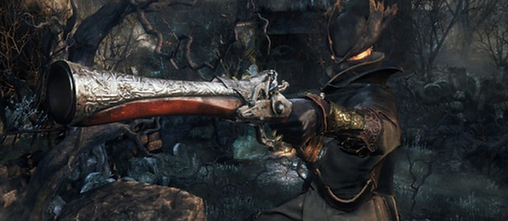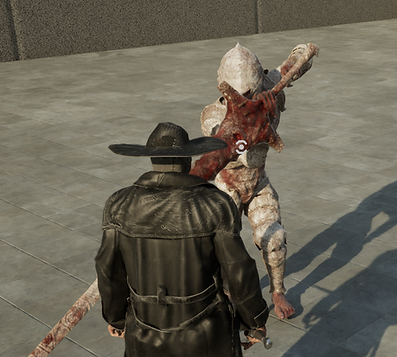Peng's Portfolio

Completed in 2023
Introduction
After working in the gaming industry for a while, I’ve gained some valuable knowledge and experience. I plan to leverage these insights to provide a more professional combat design demonstration. For instance, after completing a game design, I create a personal schedule, similar to how projects are managed within a company. In this schedule, I outline my requirements. The advantage of this approach is that it allows for effective project timeline management, helping to avoid potential delays.

Story background and inspiration
For this project, I decided to showcase my understanding of combat system design. While this is solely a combat system demo, I also considered its complete narrative, level design, art style, character, and boss design. The project was inspired by Bloodborne. The storyline revolves around a lord who intentionally spreads a plague to infect villagers, causing them to mutate and lose their sanity, becoming the lord’s weapons. However, after defeating the lord, players discover a deeper conspiracy at play.



The setting of the project is loosely based on the Glorious Revolution in England. The protagonist is portrayed as someone who has recovered from the plague. After recovering, they become physically stronger and gain new abilities. The monsters players face are inspired by Spanish conquistadors, characterized by their armor and use of firearms. I’ve developed the entire storyline, and if I have time in the future, I hope to turn it into a full game with a complete narrative, featuring 2–3 major bosses and possibly voice acting in the playable demo.
Combat Design: Documentation
In designing the combat system, I used mind maps as a tool. In my design, players can experience different combat styles by acquiring various weapons. For example, some weapons can block attacks, while others cannot but offer defensive capabilities. Certain weapons can even steal health, among other abilities. To me, the skills tied to each weapon function as interchangeable resources, akin to mechanics in some card games. Continuously strategizing to maximize the use of available resources forms the core combat gameplay of this project.

If you're interested in the design document, you can access it through this link:
Combat Design: Animation and ALS(Advanced Locomotion System)
In the entire combat system, animations play a crucial role and are one of the essential elements in delivering combat visuals. In many AAA games, motion matching is often used as the primary animation system.
However, since motion matching requires extensive motion capture data, I ultimately chose ALS (Advanced Locomotion System) as my main animation framework.



Learning ALS was quite challenging; I spent about half of the project duration researching or resolving issues related to ALS and similar animation systems. ALS significantly enhanced the character animations for movement, running, and attacks.
Building on this foundation, I added a feature where different hit animations are triggered based on the attacker’s position when the player or an enemy is hit while locked on. Similarly, blocking generates different animations depending on the location of the attack.
Combat Design: Weapon Change System
My weapon switching system is tightly integrated with the animation system mentioned above and is a critical component. Each weapon has unique idle, walking, and weapon-handling animations, all implemented through this weapon-switching system. I developed this system as a component, allowing any actor to utilize its functionality by simply attaching the component.
This system also includes weapon attack detection, hit effects, sound effects, and more, all handled within the same framework.


I implemented the functionality and switching capabilities for four different weapon types. Additionally, from a design perspective, I encouraged players to switch weapons frequently. To achieve this, I designed the stamina bar (also functioning as a mana bar) so that all actions—weapon attacks, blocking, defending, dodging, etc.—consume stamina. Aside from slow automatic regeneration, the only way to significantly recover stamina is by switching weapons. This discourages players from relying too heavily on a single weapon. Furthermore, the variety of weapon types available for switching constantly pushes players to think strategically about how to counter enemies.

Weapon:Sword

Weapon:BigSword

Weapon:Gun

Weapon:Two Hands Sword
For example, in the demo shown in the earlier video, I switched to a tow-hands sword after executing a finisher with a one-handed sword. The ow-hands sword has a life-steal ability, allowing me to significantly restore health.
Combat Design: Balance Value
The balance value was initially designed to resemble the posture bar in Sekiro: Shadows Die Twice. When an actor takes damage, the balance value increases, and once it reaches the maximum, the actor can perform a powerful attack. Later, I decided to build upon this concept by restricting the movement of players and enemies. I modified the posture bar so that it changes dynamically when moving left or right. After that, I further refined it so that the change in an enemy's Balance Value caused by the player varies depending on the enemy's relative position. For example, if a player attacks an enemy from the left while the enemy is on the right, the enemy's Balance Value will increase towards the right.
The initial balance value is set to 0 and displayed in the center. When the actor moves left or right, the value increases accordingly, with a maximum of 50. Negative values are shown on the left, and positive values on the right. When the value reaches 50, the actor loses balance, allowing their opponent to execute a powerful attack.

The enemy can be executed
In addition to movement, the balance value also changes when an actor takes damage or is blocked, depending on the attacker's direction. This value is tracked separately for players and enemies. When an enemy’s balance value exceeds an absolute value of 15, the bar turns yellow, and the final damage dealt to them increases by 1.25x. When the value exceeds 35, the bar turns red, and the final damage increases by 1.5x.



These color changes primarily serve to inform players about the value changes and encourage them to launch attacks during this period.
Combat Design: Attack Feedback
In this section, I will introduce how I adjusted the visual presentation of the entire combat system. I believe the most crucial aspect is attack feedback, which is also a point of great concern for many players. In designing attack feedback, I enhanced it through four methods:

-
Hit Animations: When the player strikes an enemy actor, the enemy will perform a corresponding hit reaction animation.
-
Matching Weapon-Specific Hit Sound Effects and Visual Effects: I believe different weapons should be paired with distinct sounds and visual effects. For example, the effects and sounds of a sword should be entirely different from those of a club.
-
Frame Rate Reduction: Upon hitting a target, the animation playback frame rate is reduced, then briefly delayed for 0.2 seconds before returning to the original speed. This technique gives players the sensation that their weapon is lodged in the enemy's body upon impact, especially suitable for sword-type weapons.
-
Bone Shaking: When specific parts of the target's body are struck, a slight tremor occurs, conveying a sense of impact. This method is particularly effective when hitting large monsters.


Interactive Design: Interface
Combat Interface:

Lock View Icon
Monster Balance Value Bar
Boss Monster HP Bar
Player Balance Value Bar
Player HP Bar
Weapon 1
Weapon 2
Rune
Endurance Bar(mana)
Current Balance Value
Item Interactive Interface:

Pick up Interface

Successfully picked up
System Setting Interface:

I provided players with an extra option to switch from lock-on mode to focus mode. After testing, I discovered that precisely reducing balance values in lock-on mode was somewhat challenging, so I introduced this alternative. I plan to iteratively improve this balancing mechanism in future updates.
Interactive Design: Bag


Exit Bag
Player dynamic display
Here, you can see that weapons have a proficiency attribute. Proficiency is part of the weapon growth system. Players can increase a weapon’s proficiency by using it to attack enemies consecutively. As proficiency increases, players can perform more consecutive attacks.
Weapon slot 1
Weapon slot 2
Rune